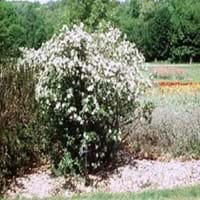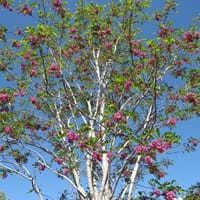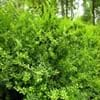Life Span
Perennial
Perennial
Origin
North America, United States, Northeastern United States, Mid-Atlantic United States, Southeastern United States, Canada
Hybrid origin
Types
Red chokeberry, Purple chokeberry
Honey Locust
Habitat
Anthropogenic, Boggy areas, Cliffs, Fens, Swamps, Terrestrial, Wet lands, Woodlands
Woodland Garden Canopy
USDA Hardiness Zone
3-8
5-8
Sunset Zone
A2, A3, 1a, 1b, 2a, 2b, 3a, 3b, 4, 5, 6, 7
2a, 2b, 3a, 3b, 4, 5, 6, 7, 8, 9, 10, 11, 12, 13, 14, 15, 16, 17, 18, 19, 20, 21, 22, 23, 24
Habit
Thicket/Colonizing
Upright/Erect
Flower Color
Not Available
Rose, Violet
Flower Color Modifier
Not Available
Bicolor
Fruit Color
Purplish-black
Purple, Brown
Leaf Color in Spring
Not Available
Red, Crimson, Bronze
Leaf Color in Summer
Not Available
Green, Blue Green
Leaf Color in Fall
Not Available
Yellow green
Leaf Color in Winter
Not Available
Not Available
Leaf Shape
Elliptic
Pinnate
Plant Season
Spring, Summer, Fall
Spring, Summer, Fall, Winter
Sunlight
Full Sun, Partial Sun, Partial shade
Full Sun
Type of Soil
Clay, Loam
Clay, Loam, Sand
The pH of Soil
Acidic, Neutral, Alkaline
Acidic, Neutral, Alkaline
Soil Drainage
Average
Average
Bloom Time
Late Spring, Early Summer
Spring, Late Spring
Tolerances
Not Available
Pollution, Drought, Salt, Soil Compaction
Where to Plant?
Ground, Pot
Ground
How to Plant?
Cuttings, Divison, Seedlings
Seedlings
Plant Maintenance
Medium
Medium
Watering Requirements
Average Water Needs, Do Not over Water, Requires regular watering
Average Water Needs, Needs a lot of water initially, occasional watering once established
In Summer
Lots of watering
Lots of watering
In Spring
Moderate
Moderate
In Winter
Average Water
Average Water
Soil pH
Acidic, Neutral, Alkaline
Acidic, Neutral, Alkaline
Soil Type
Clay, Loam
Clay, Loam, Sand
Soil Drainage Capacity
Average
Average
Sun Exposure
Full Sun, Partial Sun, Partial shade
Full Sun
Pruning
Prune after flowering, Remove branches that rub together, Remove damaged leaves, Remove dead branches, Remove dead leaves, Remove diseased branches by the tool's blades dipped into the alcohol solution
Cut limbs, Prune in winter, Prune up lowest branches, Remove branches, Remove damaged leaves, Remove dead branches, Remove dead leaves
Fertilizers
10-10-10, All-Purpose Liquid Fertilizer, Apply N-P-K
All-Purpose Liquid Fertilizer, Nitrogen
Pests and Diseases
Red blotch
Red blotch
Plant Tolerance
Not Available
Drought, Pollution, Salt, Soil Compaction
Flower Petal Number
Not Available
Single
Foliage Texture
Not Available
Medium
Foliage Sheen
Not Available
Matte
Invasive
Sometimes
Sometimes
Attracts
Not Available
Birds, Butterflies
Allergy
Anaphylaxis
Abdominal pain, Depression, Diarrhea, Digestive Problems, gastro-intestinal problems, Kidney Disease, Liver disease, Nausea, Vomiting, weakness
Aesthetic Uses
Showy Purposes
Showy Purposes
Beauty Benefits
Good for skin
Good for skin
Environmental Uses
Air purification, Food for birds, Wildlife
Air purification, Shadow Tree, soil stabilisation
Medicinal Uses
anti-cancer, Antioxidants, Cold
Antispasmodic, Antivinous, Cancer, Cholagogue, Diuretic, Emetic, Emmoiliant, Eye Problems, Febrifuge, Laxative, Purgative, Tonic
Part of Plant Used
Fruits
Flowers, Seeds, Wood
Other Uses
Pectin
Fibre, For making oil, Used as a dye, Used as essential oil, Used as fuel, Used for woodware
Used As Indoor Plant
No
No
Used As Outdoor Plant
Yes
Yes
Garden Design
Foundation, Mixed Border
Feature Plant, Shade Trees, Street Trees
Botanical Name
ARONIA melanocarpa
ROBINIA 'Purple Robe'
Common Name
Black Chokeberry
Hybrid Black Locust, Purple Robe Locust
In Hindi
Black Chokeberry Shrub
Black Locust Tree
In German
Schwarz Aronia Strauch
Schwarz Locust Tree
In French
Noir Chokeberry Arbuste
Noir Arbre Locust
In Spanish
Chokeberry negro Arbusto
Negro del árbol de la langosta
In Greek
Μαύρο Chokeberry θάμνων
Μαύρο Locust Tree
In Portuguese
Chokeberry preto Arbusto
Árvore Locust Preto
In Polish
Krzew aronii
Robinii akacjowej Drzewo
In Latin
Lichen Frutex
Locusta arbor Niger
Phylum
Magnoliophyta
Magnoliophyta
Class
Magnoliopsida
Magnoliopsida
Clade
Angiosperms, Eudicots, Rosids
Angiosperms, Eudicots, Rosids
Subfamily
Amygdaloideae
Faboideae
Number of Species
Not Available
Not Available
Season and Care of Black Chokeberry and Black Locust
Season and care of Black Chokeberry and Black Locust is important to know. While considering everything about Black Chokeberry and Black Locust Care, growing season is an essential factor. Black Chokeberry season is Spring, Summer and Fall and Black Locust season is Spring, Summer and Fall. The type of soil for Black Chokeberry is Clay, Loam and for Black Locust is Clay, Loam, Sand while the PH of soil for Black Chokeberry is Acidic, Neutral, Alkaline and for Black Locust is Acidic, Neutral, Alkaline.
Black Chokeberry and Black Locust Physical Information
Black Chokeberry and Black Locust physical information is very important for comparison. Black Chokeberry height is 182.88 cm and width 182.88 cm whereas Black Locust height is 1,524.00 cm and width 1,066.80 cm. The color specification of Black Chokeberry and Black Locust are as follows:
Black Chokeberry flower color: Not Available
Black Chokeberry leaf color: Not Available
Black Locust flower color: Rose and Violet
- Black Locust leaf color: Red, Crimson and Bronze
Care of Black Chokeberry and Black Locust
Care of Black Chokeberry and Black Locust include pruning, fertilizers, watering etc. Black Chokeberry pruning is done Prune after flowering, Remove branches that rub together, Remove damaged leaves, Remove dead branches, Remove dead leaves and Remove diseased branches by the tool's blades dipped into the alcohol solution and Black Locust pruning is done Cut limbs, Prune in winter, Prune up lowest branches, Remove branches, Remove damaged leaves, Remove dead branches and Remove dead leaves. In summer Black Chokeberry needs Lots of watering and in winter, it needs Average Water. Whereas, in summer Black Locust needs Lots of watering and in winter, it needs Average Water.





